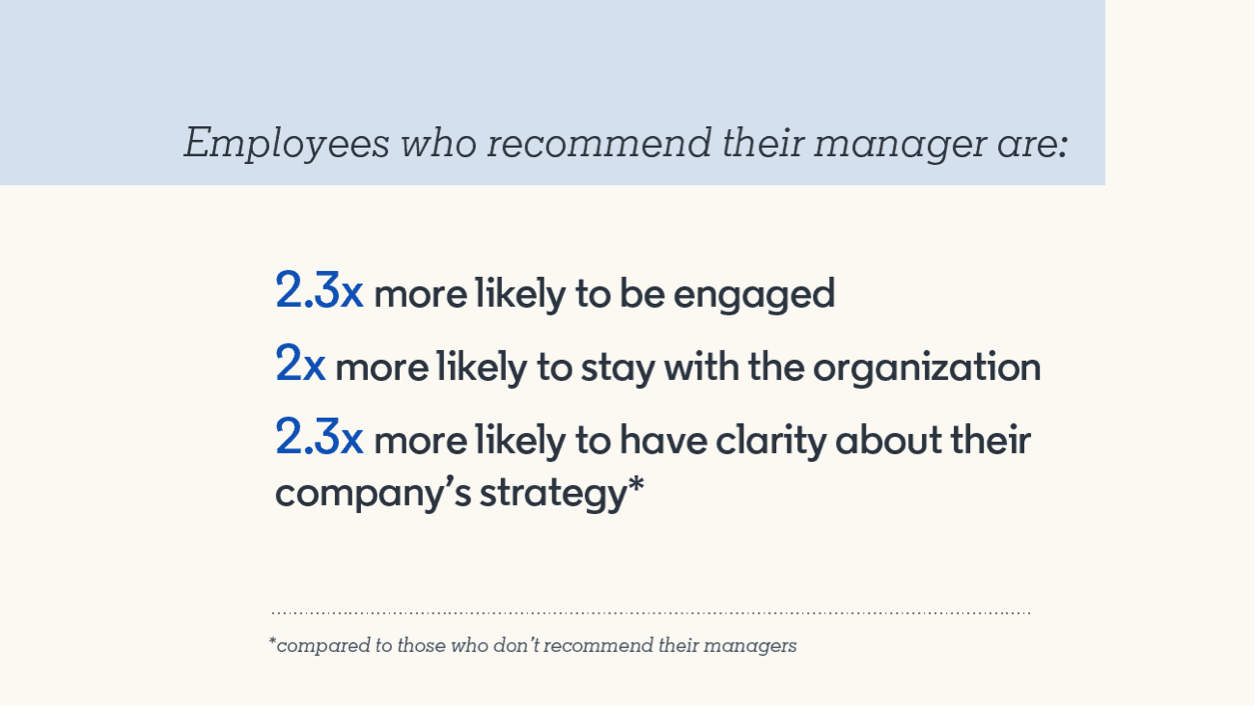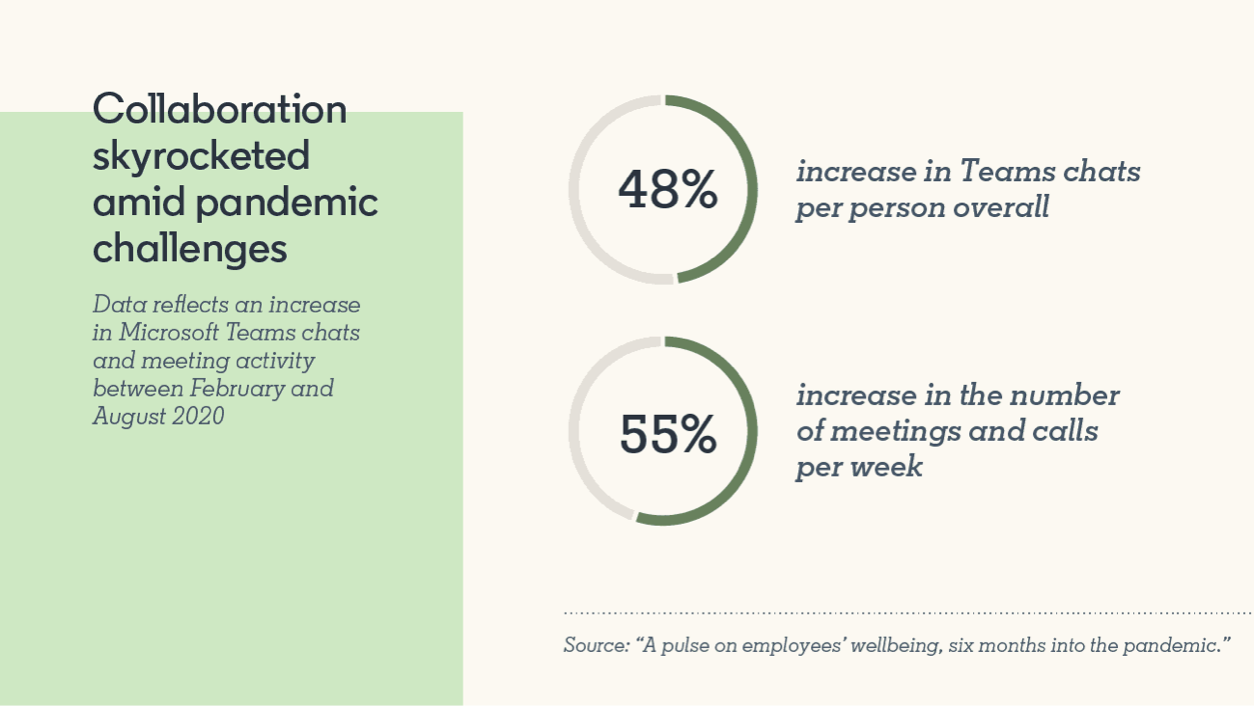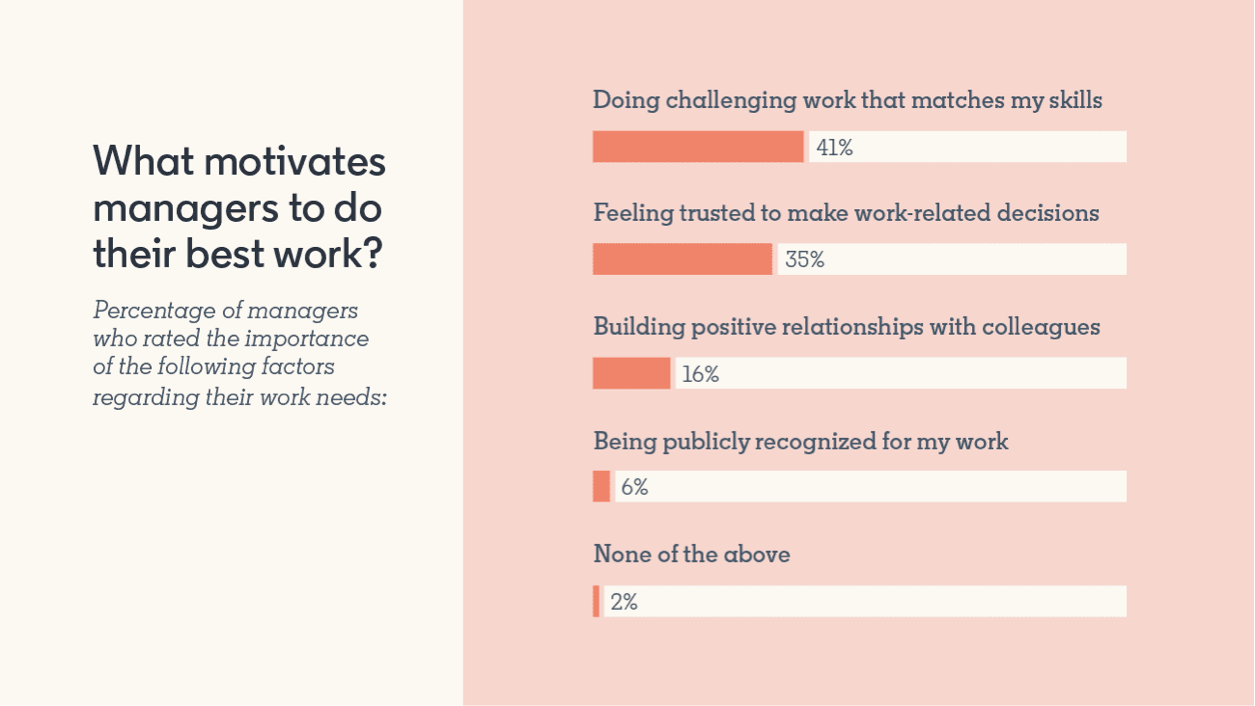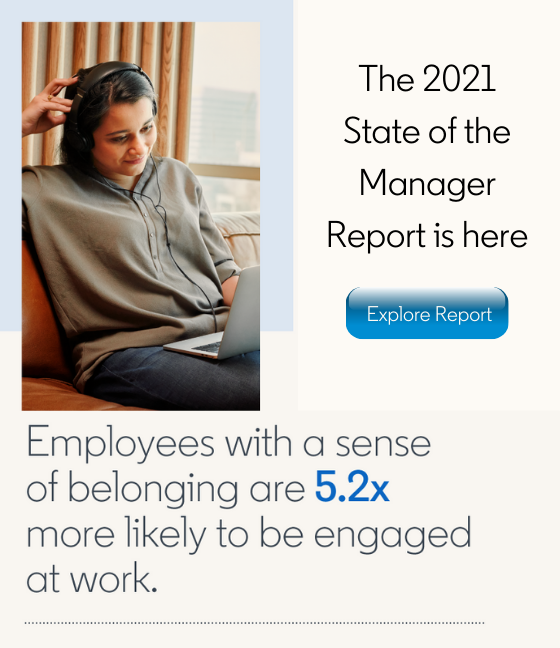Unleashing the power of inspiring managers
One HR Read similar articles

What if every person and every team in your organization could have an inspiring and effective manager? You’d have a secret potion—like magic in a bottle—to magnify your measures of success, from positive culture and employee engagement to productivity and profit.
Many of us know this intuitively. Now a new report, The State of the Manager 2021, co-sponsored by Glint and LinkedIn Learning, provides numbers to tell the story.
At a time when managers’ jobs have arguably never been more challenging, the report also shines a light on how managers are doing (specifically their level of employee engagement and burnout), as well as how their jobs are changing; their biggest obstacles; and the most impactful ways organizations can help managers succeed.
The report combines research from 3.4 million employee engagement surveys on the Glint Platform with LinkedIn behavioral and survey data. You’ll also find expert perspectives from industry leaders, HR executives, and Glint People Scientists. Here are seven of the top takeaways.
1. It’s time to take a fresh look at the transformational power of managers
Why are managers—people who oversee the work of others—such a powerful part of an organization’s success? In a best-case scenario, managers and employees don’t simply respond to what’s happening in their organization. They work together to bring out the best in one another. And that ongoing collaboration contributes to their organization’s purpose and business results.

As you can see, successful managers go hand in hand with engaged employees, who invest their cognitive, emotional, and behavioral energies toward positive outcomes. A recent study by Eric Garton and Michael Mankins determined an employee who is engaged is 45 percent more productive than one who is merely satisfied. Another study found organizations that believe their employees are both strong performers and highly engaged see 65 percent higher profitability compared to their peers.
But there’s one more dimension to a manager’s impact that deserves attention. The long, difficult months of the coronavirus pandemic have made it abundantly clear that people have far more complicated lives beyond their work identities. Managers are in the best position to understand how their team members are doing, and what they need to support their well-being and do their best work.
2. Despite the challenges of the pandemic, employee engagement among managers rose five percent in the past year.
You might think managers’ engagement in their work would have suffered recently, but you’d be wrong. In fact, employee engagement rose across all roles and levels in 2020. What’s driving this? The report presents three likely factors:
- Purpose: Many managers took on a new sense of purpose this past year as they provided a critical link between their organizations and their teams during challenging times.
- Support: People felt supported by their organizations when senior leaders took measures to keep them healthy, safe, focused, and well-informed amid drastic changes in their work environments.
- Gratitude: During previous economic downturns, people have felt grateful to keep the jobs they have.
3. But there’s reason to worry: between Q1 and Q4 of 2020, manager burnout increased 78 percent.
One LinkedIn Learning data point speaks to how managers grappled with the pandemic’s challenges. The number who watched the course “Managing Stress for Positive Change” grew 7x from 2019 to 2020.
Indeed stress and burnout have been very real threats to all employees’ well-being. For managers, “heavy workload” was the most frequently cited woe associated with burnout, but there’s also likely an under-reported factor: the prevalence of illness and loss that has touched so many people.
“There’s an emotional burnout,” Harvard Business School professor Linda A. Hill says in the report. “There’s a whole lot of coping with traumatic experiences.”
4. Four priorities stand out for managers in the new world of work.
Given the challenges we’ve been living and working through, it’s no surprise that well-being stands out as a top priority. To fortify culture and make transformation possible, organizations must first give whole-hearted support to help managers achieve their own balance and well-being.
In turn, supported managers can pay attention to four critical areas for their teams:
- Well-being—92% of employees say it’s very or extremely important to have work conditions that keep them safe and healthy.
- Belonging—94% of employees say it’s very or extremely important for their manager to help team members feel that they belong.
- Remote and hybrid teams—94% of employees are interested in an ongoing ability to work remotely at least some of the time.
- Learning and growth—91% of employees say it’s very or extremely important for their manager to encourage learning and experimentation.
5. COVID-19 exacerbated conditions that hinder managers
It’s clear how important managers are. Yet many spend their time sprinting between competing responsibilities. They act as team captain and coach while keeping in touch with HR and staying on top of communications—all while getting their regular work done.
On top of this, the pandemic added a storm of new tasks and decisions for almost every manager. And this stress amplified challenges that aren’t entirely new—like collaboration overload (the constant deluge of meetings, chats, and emails).

Well before the pandemic, Arianna Huffington and Thrive Global called attention to people who sleep with their phones by their bedsides, or even under their pillows, to be available around the clock. Now that the pandemic has ushered in a new era of remote, often asynchronous work, it’s even more important for organizations to help managers set effective boundaries between work and life, and serve as role models for their teams.
6. Three innovations make it easier for organizations to support managers at scale
While managers face tough challenges, it’s important to focus on opportunities and solutions. The good news is that technology is making it easier to support managers, particularly these three developments:
- Insights and analytics about the manager experience: Employee feedback and collaboration pattern data are helping organizations reimagine the manager experience.
- Technology as a coach: Artificial intelligence can guide people to what humans are best at, such as making connections and practicing empathy.
- Learning and growth in the flow of work: Personalized training served up at the right time and place is adding power, ease, and efficiency to building skills.
7. Tapping into motivation and support helps managers achieve their full potential
When it comes to manager motivation, two factors rise to the top: matching each manager with the right kind of work and giving them the power to make meaningful decisions. Both factors support autonomy—each person’s ability to act on their values and interests—which in turn can be tied to an organization’s larger purpose.
Three areas of support are most valuable for managers and can have a positive ripple effect across an organization: feedback, learning, and the power to take action.

To learn more about each area, you’ll want to download the report. But here’s the quick overview: Candid feedback leads to learning opportunities and actions to improve, creating a virtuous circle for both individuals and organizations to level up.
Final thoughts: embracing a growth mindset helps managers—and organizations
Challenges are steep for today’s managers. But many have converted hardship into an opportunity to learn and grow. In fact, the number of managers using LinkedIn Learning grew by 102% from 2019 to 2020, with a 49% increase in learning hours per manager.
Just as individuals can embrace a growth mindset, so can organizations. The State of the Manager Report is here to support that evolution with insights, inspiration, and one particularly critical idea: organizations succeed when people succeed.





